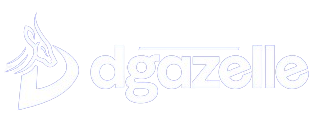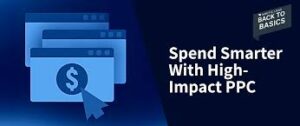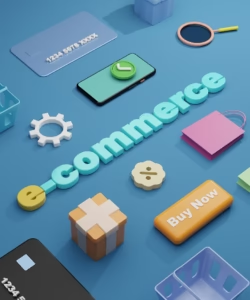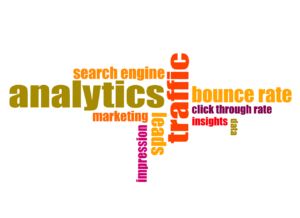When it comes to copywriting, the word and tool “authority” is extremely powerful. In fact, the most useful item in a copywriter’s toolbox might just be authority. Authority is the X Factor, or that little additional element that makes your copy glitter, and can transform your prospects’ curiosity into knowledge.

As a copywriter, you want to establish a connection with your ideal customer, earn their confidence, and offer answers based on your expertise and position of authority. But from where do you get it? How can your copy demonstrate your authority?
In this article, I’ll discuss the power of authority in copywriting.
What really is Authority in Copywriting?
So, what is a copywriting authority, or what is authority in writing? Simply speaking, it’s a term used to describe a high level of perceived credibility. People listen to those they believe are in the know. The more authority you have in a particular field, the more likely people will want to follow your advice…especially if that advice concerns buying things. Companies who spend advertising dollars on self-proclaimed gurus and experts want them to sound authoritative in their advertising.
Many people believe that obtaining authority is difficult. They believe they must put forth a lot of effort, yet this is untrue. With the correct techniques, you may acquire authority quite quickly. Good copywriters are adept at doing this and frequently use it into their work.
Using the appropriate words and phrases in your copywriting is the simplest method to establish authority. This will improve the credibility and professionalism of your message, which will make it simpler for you to persuade your audience.
Authority is a vital part of copywriting. It’s one thing to have a great product or service, but without authority, you’re going to have a hard time selling it.
A mistake to avoid in trying to show Authority in copywriting
The problem is that many writers don’t know how to use authority effectively in their copy. There’s one mistake these writers make when trying to show authority in copywriting: They use phrases like “I’m an expert”—when, in fact, they are not.
The issue with this approach is it’s not authentic, and it is always going to be obvious.
Authority in copywriting comes from one thing — your audience’s perception of you as an expert. That perception can come from three things:
1) Your credentials, certifications, and experience;
2) Your reputation; or
3) Your knowledge base;
Well, you may say, “what if I do not have any of those?” That is why we are here, and we will show you what to do to maximize the benefits that come from authority in copywriting – if you do not have those things.
Read our Post about 4 Great Copywriting Tips you should know
5 ways You can Show Authority in Copywriting
Authority is a must in copywriting.
You won’t be able to persuade potential customers to purchase your goods or services if you can’t position yourself as an authority in your field.
In copywriting, there are numerous methods to demonstrate authority, and it’s not necessarily about your qualifications. Here are some 5 ways you can show authority in copywriting:
- Linking to an Authority:
You can link to an authority to show your audience that your copywriting has been reviewed by experts and that it has passed some sort of muster.
If you are selling a product, then linking to the company that makes the product is one way to do this. For example, if you sell a weight loss supplement, you should consider getting endorsed by a doctor who is an expert in nutrition. Then you can link to his/her website or blog as well as include their name in your copywriting.
Another way of doing this is to link to any other authority who has reviewed your product or service and found it satisfactory enough for them to recommend it. If you mention a recognized expert in your copy, you immediately give your audience the impression that you’re an authority, too. So when someone links to a credible source, it makes them look like they know what they’re talking about — even if they don’t.
- Presenting Testimonials:
Testimonials are a great way to show authority in copywriting. They can be used to demonstrate the value of your product or service, especially when they come from people who have no affiliation with your business.
Testimonials are one of the most effective ways to convey trust and expertise. They come in many forms, including quotes, customer reviews and success stories. The best testimonials are from people who have actually used your product or service and can speak to its effectiveness. You can also use case studies to show how others have been successful with your product or service.
- Presenting Statistics:
Facts and statistics are another way to show authority in copywriting. These can include anything from the number of active users on a social media platform to the percentage of people who prefer one type of product over another.
You can also include facts—about how long it takes for someone to complete a task, or how much money they will save by using your product or service, instead of another option on the market today – this helps validate your claims as well as gives potential customers an idea of how valuable their purchase is going to be.

- Presenting User Reviews:
User reviews are an important part of any business’ marketing strategy because they help establish credibility with potential customers.
A good user review gives potential customers insight into what it’s like to use a particular product or service and whether it’s worth their time and money.
For example, if you’re selling software for managing projects, you might want to include user reviews from freelance writers who use it every day. This helps convince potential buyers that they’ll be able to get the most out of the software if they purchase it themselves.
- Finding ways to Expose Your Accomplishments if you have:
Find ways to expose your accomplishments before getting into the main point of the article. For example, if you have written for any publications or have been featured on any websites, this is something that should be mentioned upfront so that people know why they should trust your opinion.
Explain how you came up with this idea or what methods were used to come up with it. If there was some sort of process involved, let people know about it so that they know what type of research went into this idea and why it works so well for them.
Also, If you have a Harvard degree and a Master’s in Business Administration from Columbia University, you can use that as a credential, or an MBA from Wharton or Stanford, you can use that as a credential.
You can show your experience working with top brands too.
Also, if You’ve won awards for your copywriting work, you can use that as a credential.
2 things to Remember about Using Authority in Copywriting
- Write about topics you’re an expert in:
It may be possible, like we have shown above, to write copies, without being an expert in the field. However, the sweet spot is to write on what you know a lot about, it’s going to be easier for you to sound authoritative and confident when talking about it.
You’ll have an easier time coming up with the right words and phrases because they’ll be second nature to you.

- It is not about your Authority:
Yes, you have the authority, but if you look keenly, you will see that your customer ultimately care about their needs and want—not on your achievements.
Your accomplishments and authority should be used as a tool in your copy. It should not be the copy, itself. No-one wants to read about your accomplishments.
Conclusion
If you do have authority, then you’ll have no problem convincing your audiences to purchase from you. However, if you don’t, you can always find an authority to link to.
In the end, let what you are selling be about the customer-first, not you, then, you will maximize the power of authority in copywriting.






